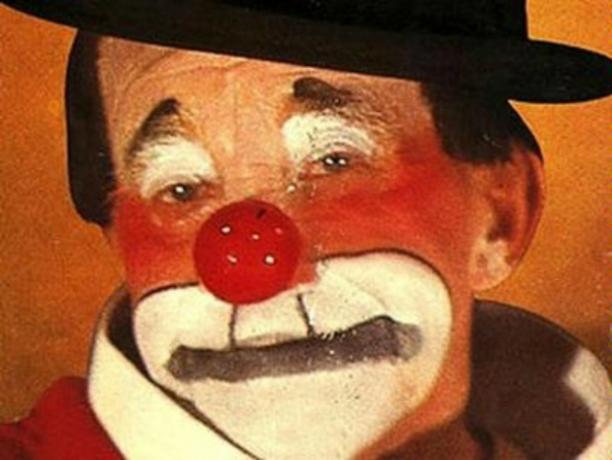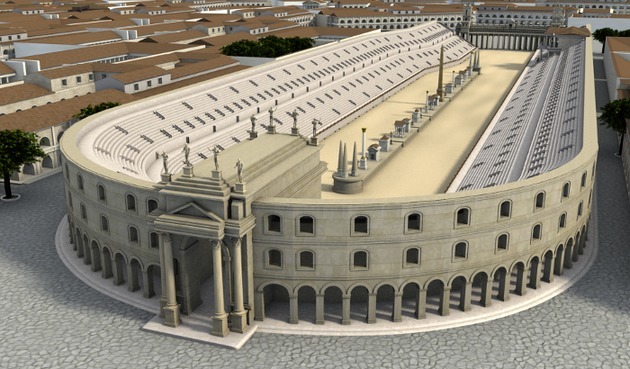O Circus day is celebrated in March, 27 th in Brazil. The importance of the date lies in the fact that it values the circus art and also its members such as the clowns, jugglers, trapeze artists, acrobats, contortionists, tightrope walkers and magic.
Remember that the circus is made up of a large colored canvas structure. Inside, we find bleachers with a circular arena in the center where various shows take place.
Date origin

The date was created in honor of the Brazilian clown Abelardo Silva, known as Piolin. He was born on March 27, 1897 in the circus that was set up in the city of Ribeirão Preto, in the interior of São Paulo. His growth took place within the circus, as his parents were circus artists. He was the creator of the Piolin Circus, which worked for about 30 years.
Abelardo died in the city of São Paulo, on September 4, 1973, aged 76 years. In addition to having international recognition, his work inspired many other clowns in Brazil and around the world.
Although his best known activity is as a clown, he was a multiple artist as he was also a juggler, contortionist, mime and musician in the circus.
Curiosities about the Piolin clown

- Washington Luís (1869-1957), former president of Brazil, was one of his great admirers.
- The artistic name Piolin is a nickname he received from the Spaniards. The term means “string” in Spanish and is related to his physical characteristics, as he was very thin and had very long legs.
- Piolin was honored at the 1922 Modern Art Week. For the event's organizers, the clown was an example of a genuinely Brazilian artist and a unique figure in popular culture in Brazil. That's because he was a very engaged artist and great promoter of art.
- Abelardo was a member of the Academy of Arts and Letters of Ribeirão Preto, occupying chair number 29. More than 20 years after his death, the place was occupied by Jair Yanni, author of the book “Piolin - The enlightened trajectory of the greatest Brazilian clown” released in 2007.
- In honor of one of the greatest clowns in the world, architect and artist Roberto Bergamo's project was to illustrate Piolin's life in a square in Jardim California, in Ribeirão Preto. There are panels on the artist's life accompanied by phrases from the book “Piolin - The enlightened trajectory of the greatest Brazilian clown”
- On that same date, World Theater Day is celebrated since 1961, when it was established by the “Instituto Internacional do Teatro”.

Circus History
The history of the circus is much older than we imagine, as this concept has already been found in studies from antiquity.
It is believed that Greeks, Romans, Egyptians, Chinese and Indians already practiced some activities that we now relate to the circus art.
In ancient Rome, the “Circus Maximus” stands out (circus maximus), a large arena where games and entertainment were presented to an audience of around 150 thousand people. Today, only a few ruins remain that prove its existence.

However, it was in the 18th century in England that the circus, as we know it today, came to life and spread around the world. In Brazil, the circus arrived almost 100 years later through European immigrants.
celebrations
Many activities take place on Circus Day either in the city or in schools. The idea is to pay homage to this art and, therefore, many circus artists perform and are invited to do interviews either on local radio or television.

There are groups that organize events for needy children, for the elders of a nursing home, or even for the children of a school.
Activities in Schools
In early childhood education it is common for children to paint circus figures such as clowns, jugglers and magicians. Some choose to make presentations with teachers and parents.
There are educators who choose something simpler, like reading stories about the circus to students or even watching videos. In addition, some schools visit a circus and children receive gifts made by the educators.

To make the activity even more interesting, some places invite magicians and clowns to interact with children. The idea is to have a different and fun day with the students, alongside the great representatives of the circus.
Below are some ideas for early childhood educators:
- Telling stories to children
- watch circus videos
- Making clown masks with students
- Drawing and painting circus figures
- Conduct a theatrical presentation
